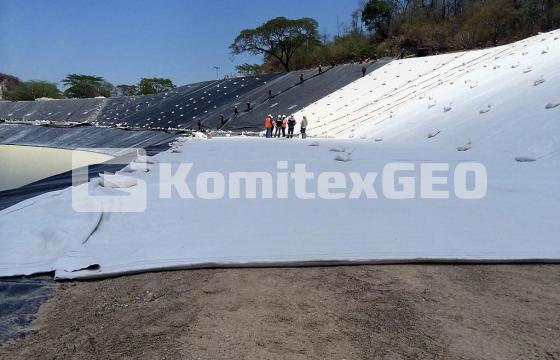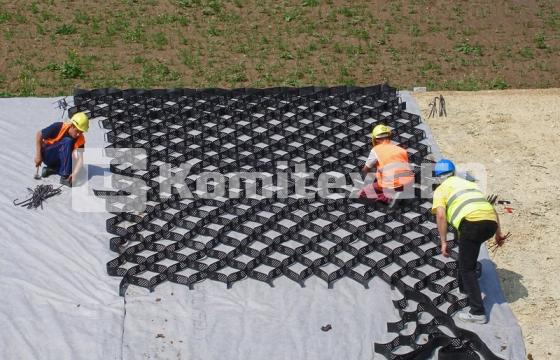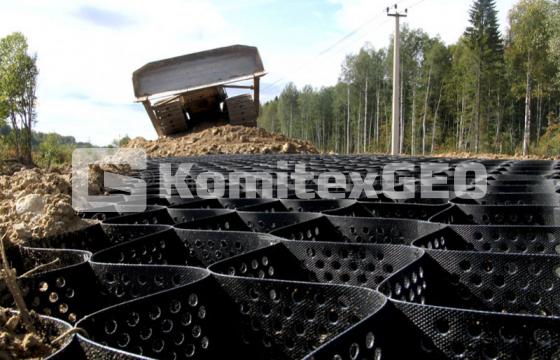3D geocell is a cellular construction material from the synthetic tapes fastened among themselves with ultrasonic, thermal welding or cross-linking. 3D geocell forms a framework that fixes any used filler (soil, concrete, crushed stone or sand). 3D geocell can be perforated in order to increase drainage capacity and bonding with filler. Non-perforated material is mostly applied for foundation reinforcement.
CHARACTERISTICS
- Made of very strong polymer which is capable to sustain considerable loadings;
- Resistant to temperature difference;
- Flexible and resilient;
- Non-toxic and safe for live organisms and the environment;
- No decay;
- UV-resistant;
- Light and compact that allows applying it without special equipment.
APPLICATION
- Slopes reinforcement and prevention of wind erosion.
- Reinforcement of coasts and coastal zones with reservoirs and weak streams.
- Reinforcement of highway embankments.
- Landscaping and improvement of gardens, sports grounds, stadiums and horse arenas.
- Foundation reinforcement for roads, highways, railroad tracks and runways.
- Construction of parkings, anti-flood dams, easy retaining walls and temporary roads.
- Reinforcement of the retaining walls.
- Organisation of drainage systems.
ADVANTAGES
- Road design without additional need for rain water deflection;
- Strongly fixes a basic layer of earth;
- Evenly distributes pressure upon the foundation
- Increases stability, reduces subsidence and side shifts of the used fillers;
- Prevents deformation of a surface.





